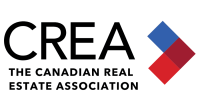
The Measure of a Tenant
Commercial real estate leaders in attendance discussed the need to research new and emerging information required to conduct an accurate risk analysis - which has become critical since the pandemic shut down so many tenants. Before the pandemic, credit scores and financial conditions dominated risk analysis, but now, a new factor within the commercial real estate industry is whether tenants can work remotely and maintain their revenue stream.
TRI WHITE PAPER HIGHLIGHTS
- Locally-based tenants and branch offices are perceived to have a higher risk profile than global tenants and those who operate in headquarters.
- Industry sectors are critical factors in determining tenant resiliency, with utility and government tenants maintaining the lowest risk profile.
- The size of a firm can greatly impact a tenant's risk profile, with larger firms holding a lower risk profile compared to smaller firms.
- The financial condition of a tenant strongly signals whether it can withstand tumultuous economic conditions or pandemic conditions.
- To become more responsive to a pressured financing environment, commercial real estate tenants could implement a data-driven red flag finance function to enhance their responsiveness and efficiency to potential recessionary scenarios in the future.
- Younger firms have a higher average risk association. Risk association gradually improved as a tenant's business achieved more years of operation.
- Tech-dominated submarkets continue to generate the strongest rental gains and office space absorption rates, totaling a quarter of the sublease space on the market.
- NNN leases and the requirement of a letter of credit are viewed as important in evaluating tenant risk, while automated rent collection is the least important.
- Tenant improvements tend to affect the risk profile of a tenant. In terms of customized spaces, tenant improvements paid for by tenants are a factor that increases tenant lease risk.
- In this study, profitability and growth, in conjunction with the financial conditions, were the most important factors in analyzing tenant risk.
This new perspective on tenant resiliency for office and retail tenants and leases led to the CCIM TRI research by Dr. Norm Miller, Ph.D, professor emeritus at the University of San Diego. The task of trying to measure tenant resiliency is the aim of this research. This research focused on office and retail tenants and leases and did not delve specifically into industrial property or multifamily.
As a result of, we now have a comprehensive and novel measurement of tenant resiliency, based on the input of experts, that did not exist pre-pandemic. An accurate TRI measurement system helps offer insights into whether a tenant can sustain operations through an economic downturn or pandemic-like event.
Learn more about the CCIM Tenant Resiliency Index by reading the "Developing a Tenant and Lease Resilience Score, The CCIM Tenant Resiliency Index (TRI)" white paper written by Dr. Miller, Ph.D, with assistance from Sinead Myers.
Norm Miller. Ph.D. with assistance from Sinead Myers This white paper was derived from funding from the Robert L. Ward Fund of The CCIM Institute Foundation. The research was conducted with the Homer Hoyt Institute and the University of San Diego.






